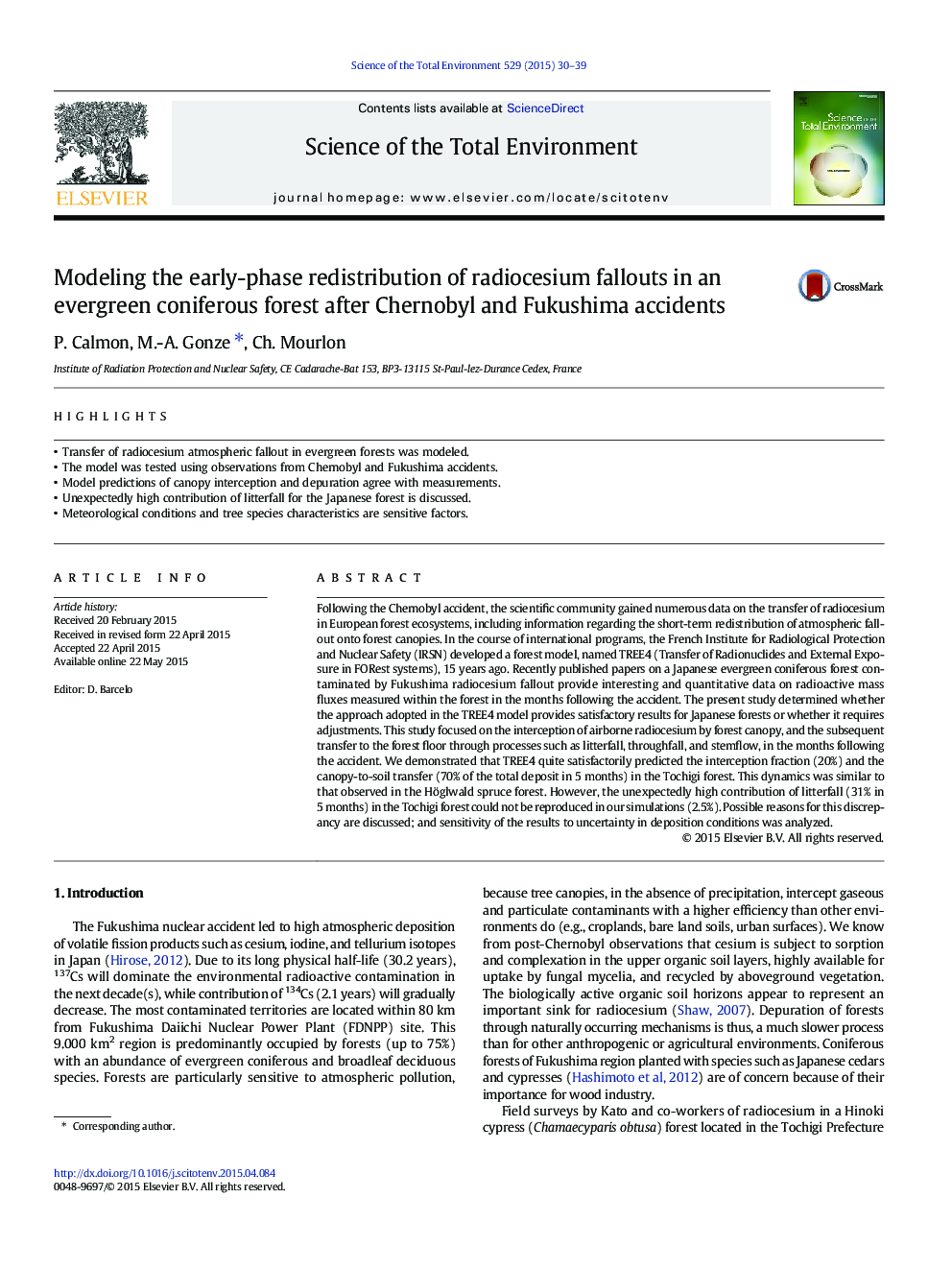| کد مقاله | کد نشریه | سال انتشار | مقاله انگلیسی | نسخه تمام متن |
|---|---|---|---|---|
| 6326350 | 1619754 | 2015 | 10 صفحه PDF | دانلود رایگان |
عنوان انگلیسی مقاله ISI
Modeling the early-phase redistribution of radiocesium fallouts in an evergreen coniferous forest after Chernobyl and Fukushima accidents
ترجمه فارسی عنوان
مدل سازی توزیع زودهنگام فرسایش رادیوسیم در یک جنگل همیشه درخشان پس از حوادث چرنوبیل و فوکوشیما
دانلود مقاله + سفارش ترجمه
دانلود مقاله ISI انگلیسی
رایگان برای ایرانیان
موضوعات مرتبط
علوم زیستی و بیوفناوری
علوم محیط زیست
شیمی زیست محیطی
چکیده انگلیسی
Following the Chernobyl accident, the scientific community gained numerous data on the transfer of radiocesium in European forest ecosystems, including information regarding the short-term redistribution of atmospheric fallout onto forest canopies. In the course of international programs, the French Institute for Radiological Protection and Nuclear Safety (IRSN) developed a forest model, named TREE4 (Transfer of Radionuclides and External Exposure in FORest systems), 15Â years ago. Recently published papers on a Japanese evergreen coniferous forest contaminated by Fukushima radiocesium fallout provide interesting and quantitative data on radioactive mass fluxes measured within the forest in the months following the accident. The present study determined whether the approach adopted in the TREE4 model provides satisfactory results for Japanese forests or whether it requires adjustments. This study focused on the interception of airborne radiocesium by forest canopy, and the subsequent transfer to the forest floor through processes such as litterfall, throughfall, and stemflow, in the months following the accident. We demonstrated that TREE4 quite satisfactorily predicted the interception fraction (20%) and the canopy-to-soil transfer (70% of the total deposit in 5Â months) in the Tochigi forest. This dynamics was similar to that observed in the Höglwald spruce forest. However, the unexpectedly high contribution of litterfall (31% in 5Â months) in the Tochigi forest could not be reproduced in our simulations (2.5%). Possible reasons for this discrepancy are discussed; and sensitivity of the results to uncertainty in deposition conditions was analyzed.
ناشر
Database: Elsevier - ScienceDirect (ساینس دایرکت)
Journal: Science of The Total Environment - Volume 529, 1 October 2015, Pages 30-39
Journal: Science of The Total Environment - Volume 529, 1 October 2015, Pages 30-39
نویسندگان
P. Calmon, M.-A. Gonze, Ch. Mourlon,
